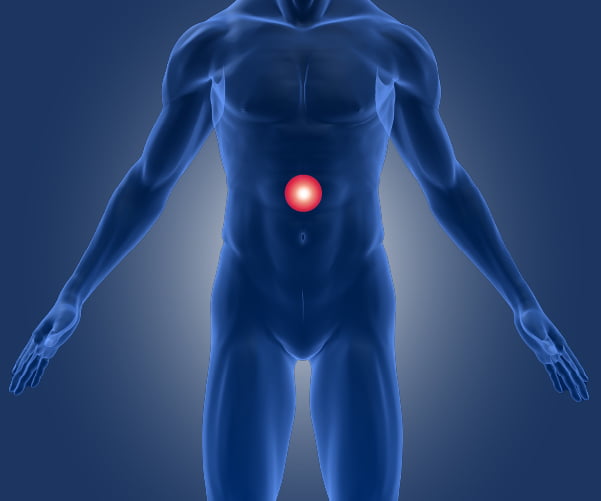Overview
If you or a loved one has been recommended to undergo fundoplication surgery, it’s essential to understand the procedure, its benefits, and potential risks. This comprehensive guide aims to provide you with detailed information about fundoplication to help you make an informed decision and prepare for the surgery.
What is Fundoplication? Fundoplication is a surgical procedure performed to treat gastroesophageal reflux disease (GERD), a chronic digestive disorder where stomach acid frequently flows back into the oesophagus. This backflow of acid (called acid reflux) can irritate the lining of the oesophagus, causing symptoms like heartburn, regurgitation, and chest pain.
The surgery involves wrapping the upper part of the stomach (fundus) around the lower end of the oesophagus. This strengthens the lower oesophageal sphincter (LES), a muscle responsible for preventing stomach contents from flowing back into the oesophagus. When the LES functions correctly, it reduces the frequency and severity of acid reflux episodes, alleviating GERD symptoms.

Types of Fundoplication
There different types of fundoplication procedures, depending on how much fundus is wrapped around the oesophagus.
- Nissen Fundoplication is the first described and one of the most common types of fundoplication, it involves wrapping the fundus entirely around the lower oesophagus. This creates a 360-degree wrap, which effectively strengthens the LES.
- Partial Fundoplication: In this procedure, the stomach is wrapped only partially around the esophagus. The two main types of partial fundoplication are: Toupet Fundoplication: A 270-degree posterior wrap and Dor Fundoplication: A 180 to 200-degree anterior wrap.
- Oesophageal manometry: This test measures the pressure and function of the oesophagus.
The choice between different types of fundoplication depends on the patient’s specific condition, the surgeon’s preference, and the patient’s oesophageal motility (the ability of the oesophagus to move food into the stomach).
Indications for Fundoplication
Fundoplication is typically recommended for patients with GERD who:
- Have not responded well to lifestyle changes and medications.
- Experience complications such as oesophagitis (inflammation of the oesophagus), oesophageal strictures (narrowing), or Barrett’s oesophagus (a precancerous condition).
- Have a hiatal hernia, where part of the stomach pushes through an opening in the diaphragm into the chest cavity.
Preparing for the Surgery
Fundoplication can be performed using an open or laparoscopic (key-hole) approach. The choice depends on various factors, including the surgeon’s preference, your specific condition, and your overall health however, in most cases nowadays a laparoscopic approach is advocated.
- Open Fundoplication: In this traditional approach, the surgeon makes a long incision in the upper abdomen to access the stomach and oesophagus. The fundus is then wrapped around the lower oesophagus and secured in place with sutures.
- Laparoscopic Fundoplication: A minimally invasive technique that involves making several small incisions in the abdomen. The surgeon inserts a laparoscope (a thin tube with a camera) and specialized surgical instruments through these incisions. The procedure is then performed under the guidance of the camera’s real-time imaging. Laparoscopic fundoplication generally results in less pain, a shorter hospital stay, and a faster recovery compared to the open approach.
The surgery usually takes 2 to 3 hours to complete. After the procedure, you will be moved to a recovery room where your vital signs will be monitored.
Risks and Complications
Overall, fundoplication is a safe surgery with small risk of complications. Risks may include:
- Bleeding
- Infection
- Damage to nearby organs (oesophagus, stomach, spleen, or liver)
- Anaesthesia-related complications
- Gas bloat syndrome (difficulty belching or vomiting)
- Dysphagia (difficulty swallowing)
- Persistent or recurrent GERD symptoms
- Need for reoperation
It is essential to discuss these risks with your surgeon and weigh them against the potential benefits of the surgery.
Recovery and Aftercare
After fundoplication, you will likely stay in the hospital for 1 to 3 days, depending on the surgical approach and your overall health. Your healthcare team will provide you with detailed instructions for your recovery, which may include:
- Pain management: You will be prescribed pain medications to manage post-operative discomfort.
- Diet: You will initially be on a liquid or soft food diet before gradually transitioning back to a regular diet over several weeks.
- Activity: You will be encouraged to walk and perform gentle exercises to promote healing and prevent blood clots. However, avoid heavy lifting or strenuous activities for at least 4 to 6 weeks.
- Follow-up appointments: You will have follow-up appointments with your surgeon to monitor your progress and address any concerns.
Most patients experience significant improvement in their GERD symptoms after fundoplication. However, it’s essential to maintain a healthy lifestyle, including a balanced diet, regular exercise, and weight management, to prevent recurrence of symptoms.
Frequently Asked Questions
How long does it take to return to normal activities after fundoplication?
Most patients can return to work and resume their regular activities within 2 to 4 weeks after surgery. Your exact recovery timeline will depend on the surgical approach, your overall health, and the nature of your work or regular activities. Be sure to follow your surgeon’s recommendations for resuming activities.
Will I need to take GERD medications after fundoplication?
Many patients experience significant improvement in their GERD symptoms and can reduce or stop their GERD medications after fundoplication. However, some patients may still need to take medications to manage occasional symptoms or for other related conditions. Discuss your medication plan with your healthcare provider.
Is weight loss common after fundoplication?
Some patients may experience temporary weight loss after fundoplication due to dietary restrictions, changes in eating habits, and reduced appetite. However, this weight loss is generally not significant and stabilizes as you return to a normal diet.
Can GERD symptoms recur after fundoplication?
Although fundoplication is effective in reducing GERD symptoms for most patients, there is a possibility that symptoms may recur in some cases. Factors that can contribute to the recurrence of GERD symptoms include weight gain, pregnancy, and the natural aging process. Maintaining a healthy lifestyle, managing your weight, and following your healthcare provider’s recommendations can help reduce the risk of symptom recurrence.